Enter The Wild
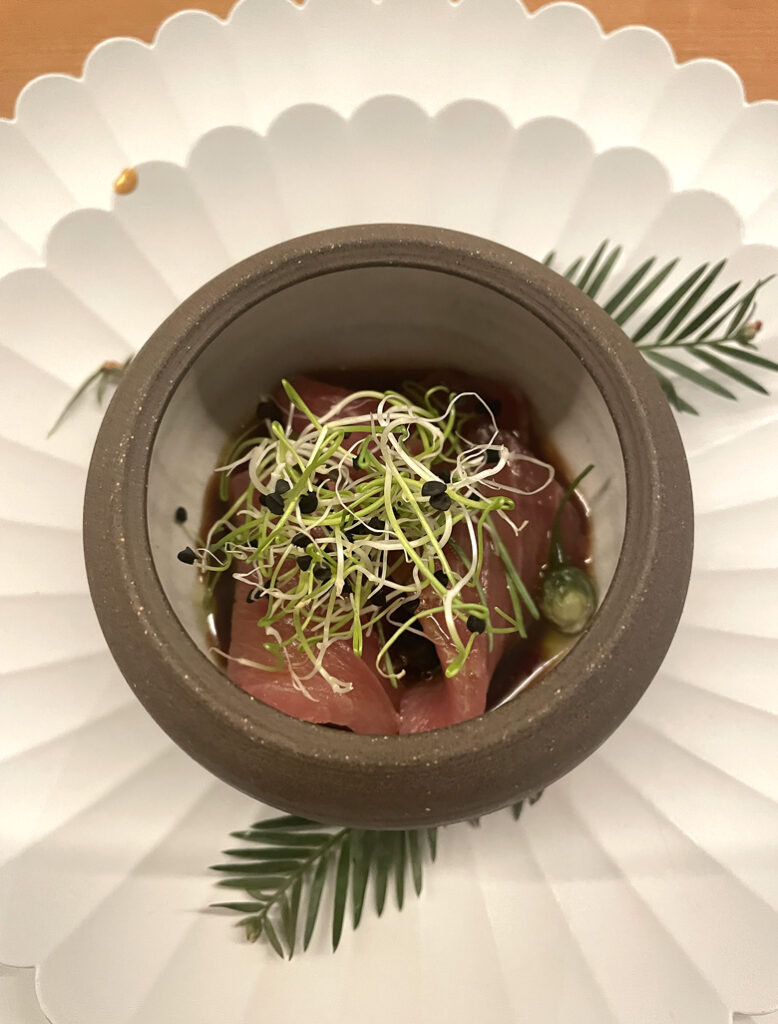
Something wild has happened at 201 Spear St. in San Francisco.
The space that housed Gozu restaurant for the past five years was renamed in August to The Wild.
Chef-Owner Marc Zimmerman, who also owns San Francisco’s Yokai, is still in charge. The layout of the striking, black-box dining room with seats circling the perimeter of a live-fire open kitchen is still intact. But the menu has shifted, giving him and his team, which includes Chef de Cuisine Peggy Tan and Pastry Chef Mark Lieuw, more liberties with both service and dishes. Even the libations that once touted an impressive collection of Japanese whiskies have now shifted to include many Calvados and Armagnacs.
Previously, Gozu was laser-focused on Japanese A5 Wagyu, and using every bit of that luxurious beef — from flesh to fat to bones to tendons — in uncanny ways. In contrast, The Wild’s current menu is noticeably absent of Wagyu. In fact, the restaurant’s dry-aging fridge that used to hold slabs of Wagyu now house Liberty Farms ducks.
“It feels fresh,” says Zimmerman about the change. “It gives us the ability to stretch more.”
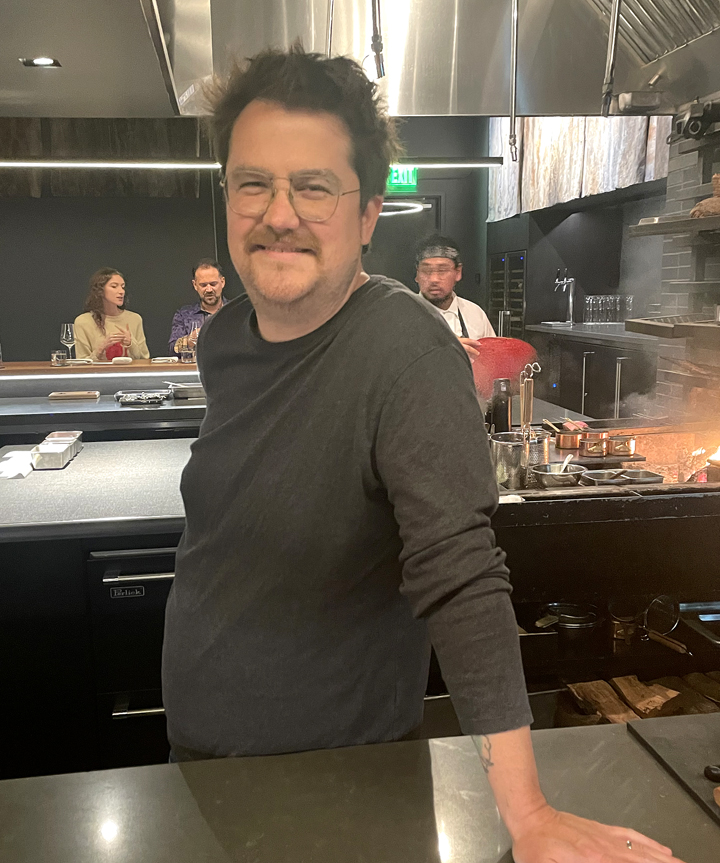
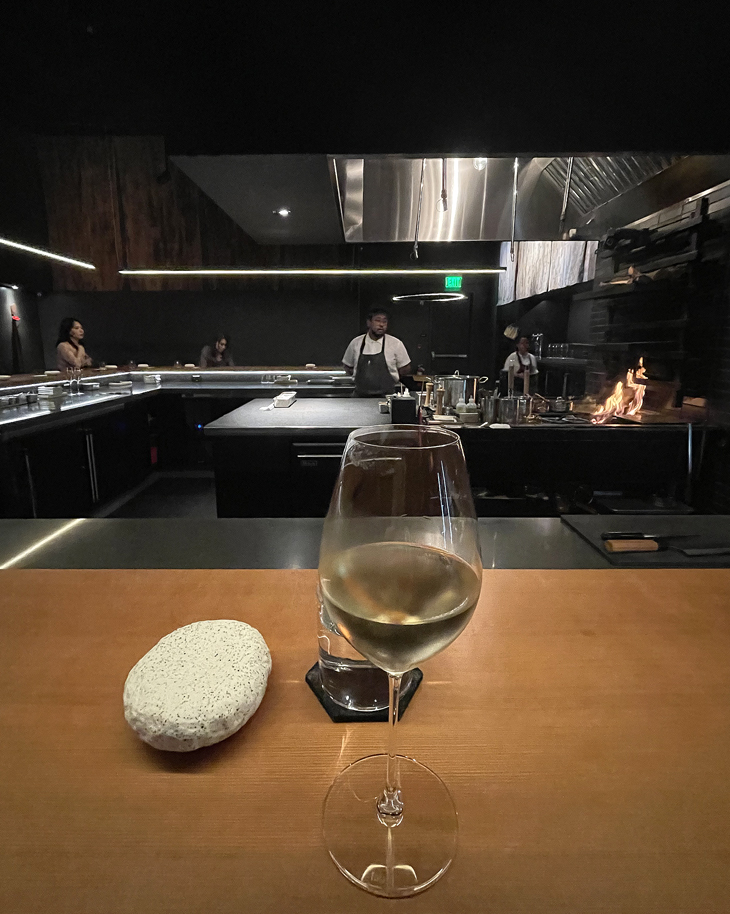
Diners seem to be embracing it all, too. Zimmerman acknowledges that Gozu’s use of Wagyu in nearly every dish may have intimidated some and even turned off others. Now, The Wild has attracted more first-time diners, as well as regulars who come in twice a week for the a la carte or the $130 five-course tasting menu.
I noticed the change immediately when I was invited in as a guest of the restaurant on a Thursday night. When I dined at Gozu previously, the vibe was always pretty subdued, with maybe six diners on a weeknight. This time, nearly every seat was filled, uptempo music was playing at a louder pitch, and the ambience was much livelier.


The plating at The Wild is simply beautiful, with nothing superfluous. Instead, it’s spare and elegant.
The tasting menu started with an amuse of a tiny, thin and crisp buckwheat crostate filled with local anchovies gently pickled in white balsamic, and garnished with avocado puree and mustard seeds. It was a rousing first bite, full of sharpness, and the rich taste of the teeny, oily fish.



Next, the tomato salad you only wish you’d be willing to make at home. That’s because it requires peeling perfect cherry tomatoes, forming creamy avocado into melon-like balls, and gathering some sea buckthorn, geranium and oyster leaf, and not to mention candying pine nuts in dashi. The tomatoes, chilled and juicy, burst with sweetness and perky tanginess, with the candied nuts boosting the umami level even higher.
Santa Barbara bluefin tuna sashimi is glorious. Buttery tasting slices get dressed in ponzu with bonito and finished with fermented onion capers. It is the salty, savory sea personified.
Tender Monterey abalone gets a sauce made with brown butter and its liver, along with crispy fried seaweed threads, and kohlrabi two ways — crunchy and raw, and soft and braised. Smoked, Madeira-soaked golden raisins add a subtle toasty, fruity sweetness.
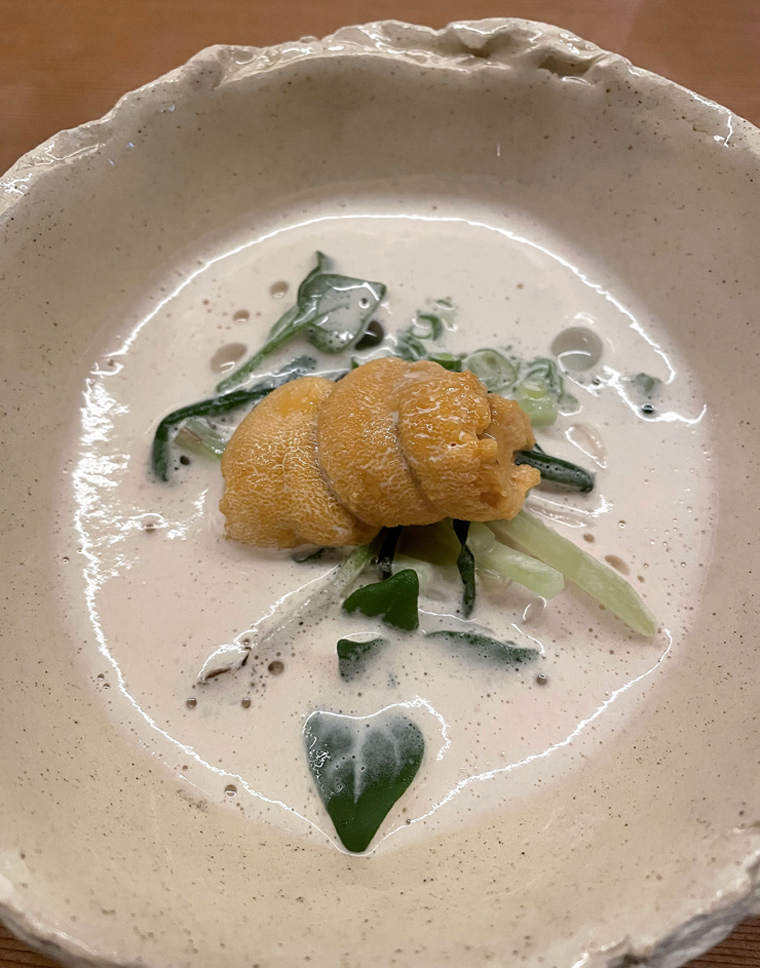
That’s followed by what’s surely destined to become a signature dish: a bowl of ramen noodles crowned with uni. Chef Tan sets it down, trains her siphon on it, and unleashes a white foam of lobster, uni, and miso sauce all overtop. There’s a buttery, sea sweetness to the dish along with surprise bits of black garlic that add such wine-y molasses-like depth. It’s a rich dish that somehow eats light.

Those Liberty Farms ducks that get aged for seven days stars in the final savory course. Slices of rosy pink breast meat are so succulent that they squirt with juice. And yes, that is foie gras on top of it, making this dish taste even more indulgent. Duck and fruit always go hand in hand; here, its partner is blackberry puree. Salsify, with its gentle oyster-like taste, look almost like firewood and taste wonderfully smoky.

To clear the palate, there’s a perfect sphere of Santa Rosa plum sorbet made with fruit from Frog Hollow Farm. Mint meringue cylinders are arranged just so, almost like modern art, and add a hit of crispness along with sweetness and a whoosh of freshness.
When I tell you that dessert was a canele made with porcini, you may grow incredulous. But it’s amazing, with the woodsy taste of the mushrooms in balance with the sugar’s deep caramelization. It’s served with candy cap caramel, with its maple syrup-like taste, and birch ice cream with an almost root beer-like quality.

You’re instructed to pick up the canele half with your fingers, then to use a spoon for everything else. The taste transports you immediately to a soothing campfire in the forest, where you’ve somehow had the good fortune to invite a gifted pastry chef to tag along.

The last sweet bites are tangy strawberry pate de fruit, and cold, creamy pecan praline squares made with Japanese rice crackers and a touch of salt, which melt in the mouth and are reminiscent of peanut butter.
Out with the old, and in with The Wild? You bet.
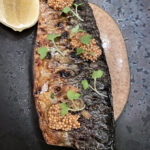
More: A Visit to Yokai
